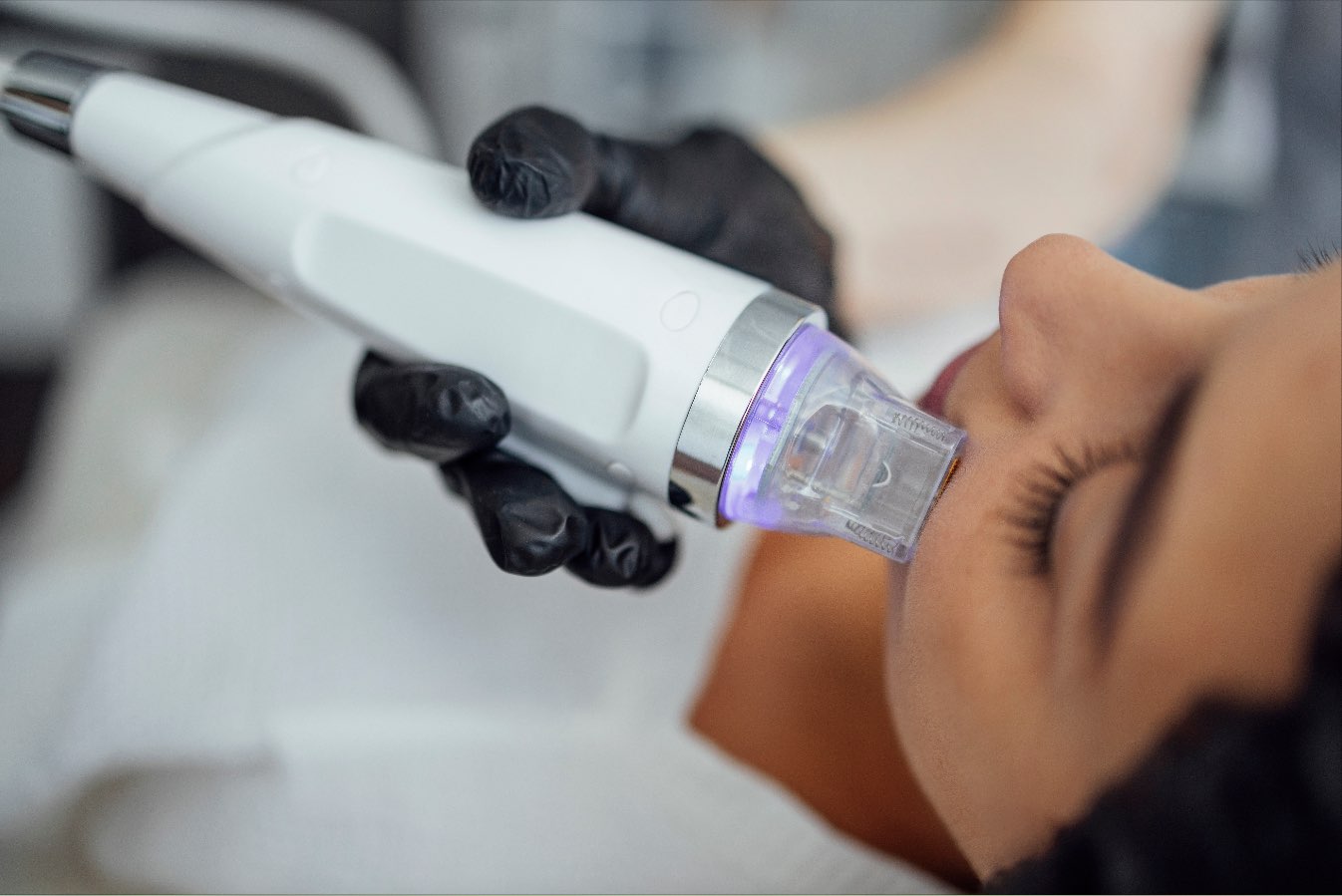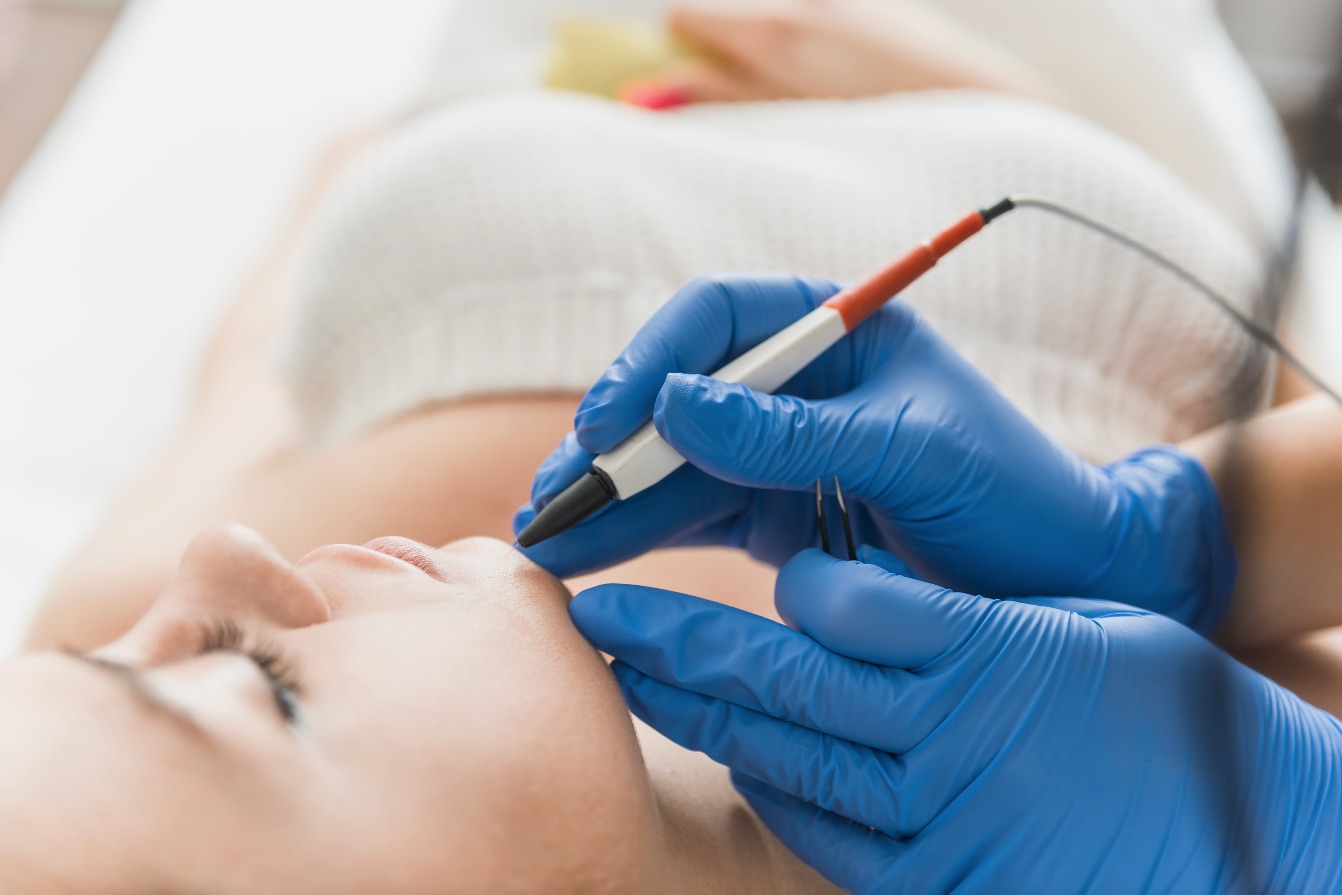In September-October 2023, the Government opened a public consultation regarding the parameters of licences for aesthetic treatment practitioners.
While almost everyone working in the beauty sector is on board with the concept of regulation in a bid to improve consumer safety, the proposed categorisation of certain treatments were shocking to many.
Several treatments that are currently regularly performed by beauty therapists would be restricted if the licence scheme were to go ahead with the proposed red, amber and green treatment categorisations that have been drafted up for the consultation.
For example, treatments that currently fall under the amber category (meaning that they would need oversight of a healthcare professional in order to be performed by qualified beauty therapists) include radiofrequency, electrolysis and any treatment combining two or more technologies – such as RF microneedling.
Although this initial outline has caused concern for many, it is important to note that this is very much a first consultation and not the final structure for the licences.
However, it is vital that beauty professionals feed back their thoughts on the categorisations and the scheme as a whole during the consultation period, which, as Professional Beauty went to print, was scheduled to end on October 28.
You can see the full categorisation lists here and you can access the consultation form here.
Is it a case of beauty versus medics?
Another point of concern has been the way the Government’s consultation document appears to draw a line between healthcare professionals and everyone else without clarity on how it might differentiate in the beauty sector between qualified, experienced therapists and people entering the industry with insufficient training via very short courses.
Currently the green category – the only one that doesn’t require involvement of a medic – lists treatments such as microneedling and mild peels. While most treatments on that list have not raised concern in the beauty sector, aesthetics trainer Andrew Hansford commented that “no-needle” fillers including pneumatic devices that use intense pressure to pass substances through the epidermis should move category.
“There have been many cases of occlusions with these devices,” he added. The green list also states that “all practitioners are eligible to perform licenced procedures where they meet agreed standards”.
However, there is no guidance on what those standards will be. It is expected that an additional Government consultation will take place to define a new enforceable education training standard for each type of licence.

Who’s speaking up for beauty therapists in the aesthetic licensing debate?
When we posted the categorisations on Professional Beauty’s social media channels, some people asked in the comments, “why has this been allowed to happen – where are the beauty associations in all this?” And the answer is, front and centre: several associations have been feeding in evidence to the Government for years to support the safety of beauty therapists performing many of the advanced treatments listed in the amber category without medical oversight.
The Beauty Industry Group (BIG) has provided evidence regarding the relative safety of treatments including radiofrequency, electrolysis and combined treatments in the hands of appropriately trained beauty therapists and will continue to do so as the consultation progresses, in association with the Beauty, Aesthetics and Wellbeing All Party Parliamentary Group (BAW APPG).
BIG comprises Babtac, British Institute and Association of Electrolysis (BIAE), British Beauty Council, Cosmetic Executive Women (CEW), Cosmetics Toiletries & Perfumery Association (CTPA), Federation of Holistic Therapists (FHT), The Federation of Nail Professionals (FNP), Habia, Hair And Beauty Suppliers Association (HBSA), National Hair and Beauty Federation (NHBF), Phab, and the UK Spa Association (UKSA).
Within BIG, there is a licensing task and finish group set up specifically to work towards common agreement for the detail of the proposed licensing scheme. This is chaired by Diane Hey, representing Habia, and also includes Lesley Blair of Babtac, Caroline Larissey of NHBF, Victoria Brownlee of British Beauty Council and Helena Grzesk for UKSA.
However, beauty is just one piece of the puzzle, with numerous medic-focused organisations also having their say, including JCCP, CQC, MHRA, GMC, GDC and more.
What happens next in the move toward aesthetic licences?
When it comes to next steps for the industry, Diane Hey told Professional Beauty, “This is the first public consultation, and it is the sector’s opportunity to provide feedback on the identified proposals.”
She urged beauty professionals to remember that “there are a number of aspects in the consultation that are yet to be determined.” She added, “We welcome licensing, and have all worked closely with Government to raise awareness of the need for properly qualified practitioners providing procedures in safe and effectively equipped premises. The licence seeks to be reflective of the level of risk associated the procedure.”
While Hey and the rest of the taskforce agree that it is vital for beauty professionals to provide feedback during the consultation period, she urged them to focus on evidence rather than feelings.
She continued, “We have been made aware of some concerns about some of the categorisation in amber of traditional beauty treatments and believe that the consultation will provide feedback on the intial proposed placement of some of those, therefore we recommend that any comments and data available is added to the feedback.
To present a united industry voice, the taskforce is also inviting beauty professionals – both practitioners and manufacturers – to contact her with evidence that could be useful in making a case for why certain treatments should be moved between the red, amber and green categorisations, particularly evidence to demonstrate the safety profile of each treatment. This can be sent to the group via email to: chair@beautyindustrygroup.uk.

Beauty industry view
Many of you shared your thoughts with us regarding the consultation and its proposed categorisations. Lanre Atijosan, owner of The Beauti Bank in London, said, “This has turned into the medic/non medic divide and in reality there are several medics contributing to the lack of patient safety and several non medics who are fixing their work. The same is true in the reverse. This process is discriminatory against non medics. Education has been created that non medics cannot participate in. Pathways into aesthetics have been slow to appear.”
Linda Garbutt, owner of Solitude in Essex, added, “It’s all about accredited training for everyone, and that means health professionals too! I’m all for this but not with therapists’ qualifications and professionbeing undermined in the process.”
Laura Forder, owner of Forders Aesthetics & Beauty Studio in Bedford, commented, “I would like to understand the amber category in terms of oversight by a medical professional. Would you need someone onsite at all times? Even though these changes aren’t coming in anytime soon it would be good to know so I can change my future business models.”
With regards to how to make decisions about training during the period before a final decision is made on licences, aesthetic trainer Andrew Hansford advised, "As long as the training company is in line with national occupational standards, this means the pathway to qualification will be a lot easier when the time comes.
He added, "The legislation will be a quite a while so don’t get caught up in the panic that some companies are creating to get delegates trained now. How can they when we don’t categorically know what the outcomes or proposed changes will be yet?”
Aesthetic treatment regulation timeline
Below are just a few of the key dates in the process that has led to the current consultation. In addition to this, BIG and others have lobbied Government via additional open letters, meetings and reports.
April 2013: Professor Sir Bruce Keogh, then NHS medical director, publishes the Keogh Review, highlighting concerns about safety and regulation of cosmetic procedures
January 2015: National Occupational Standards (NOS) reviewed for Beauty Advanced Practices to create a suite of NOS for peels, skin needling, laser and light.
January 2016: Following consultation, HEE publishes qualification framework recommending Level 4 for advanced treatments such as microneedling and laser hair removal and Level 7 for injectables.
July 2016: CIBTAC Level 4 Diploma in Aesthetic Practice and Level 4 Award in Core Knowledge launched.
September 2016: Initial meeting of Aesthetic Practitioner Working Group, chaired by Caroline Larissey.
2016: Joint Council for Cosmetic Practitioners (JCCP) established, to provide a register of qualified practitioners.
March 2018: Department of Health and Social Care (DHSC) launches consultation on whether non-surgical cosmetic treatments should be more strictly regulated.
March 2018: Beauty Alliance meets regarding JCCP register being non inclusive.
May 2018: Review launched into beauty and aesthetics National Occupational Standards.
September 2018: JCCP creates Competency Framework, which replaces the Health Education England training recommendations. November 2018: Beauty Aesthetics Special Interest Committee established, including representatives from Babtac, VTCT, Habia, JCCP and others (now called Beauty Industry Group (BIG) and with additional associations).
May 2019: All Party Parliamentary Group (APPG) for Beauty Aesthetics and Wellbeing established.
June 2020: Beauty Aesthetics & Wellbeing Inquiry launch.
January 2021: Personal Care recognised by Government as a specific sector.
April 2021: Botulinum Toxin and Cosmetic Fillers (Children) Act 2021 bans injectables for under-18s.
July 2021: Beauty Aesthetics and Wellbeing APPG report recommends measures such as practitioner licences, and for fillers to become prescription only.
November 2021: BIG Task and Finish Group for licensing established, led by Diane Hey.
February 2022: Government announces plans to introduce legislation to regulate non-surgical cosmetic procedures, including licensing for practitioners and premises.
April 2022: Health and Care Act law passed, gaining royal assent in May, making licensing possible.
August 2022: Government’s Health and Social Care Select Committee releases report on impact of body image on mental and physical health, with further recommendation for aesthetic treatment regulation.
March 2023: Consultation on Level 5 aesthetic practitioner apprenticeship standard.
September 2023: Government Department of Health and Social Care opens consultation into non-surgical cosmetic procedure licences.
October 28, 2023: Deadline for giving feedback in Government consultation.
Have your say
Access the Government's aesthetic treatment licences consultation form here.




